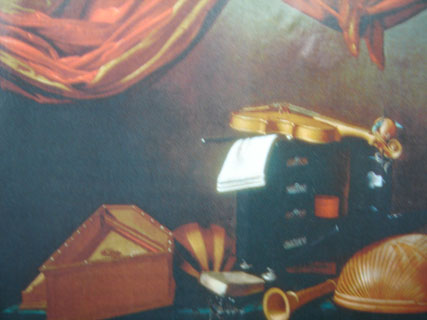This is the last week of the Proms so today’s picture is Still Life with Musical Instruments, by the Jesuit priest and painter Evaristo Baschenis. Baschenis was one of the most brilliant still life painters of the seventeenth century but because so many of his pictures are still concentrated in collections in his native Lombardy he is not as well known, internationally, as he deserves to be. The work reproduced on this page was painted in around 1660, when the artist was in his mid-forties. It is the only one of his paintings in a British public collection and can be seen at the Barber Institute of Arts in Birmingham.
In his Lives of the Painters of Bergamo, the eighteenth-century author F.M. Tassi credits Baschenis with the invention of an entirely new genre of art: “That in which he truly succeeded was a most unusual manner that he himself invented which was his alone … he painted every sort of instrument of sound with incredible naturalness and truth, and he succeeded in this with a perfection that has never been equalled.” Baschenis was a keen amateur musician and a connoisseur of fine stringed instruments. His art pays indirect tribute to the work of the great Lombard instrument-makers at work in his lifetime, who included Niccolo Amati and his pupils Andrea Guarneri and Antonio Stradivarius.
Little is known about Baschenis’s beginnings as an artist, other than that he came from a family of painters in Bergamo known principally for religious works in fresco, and that he was apprenticed to one Gian Giacomo Barbella from the town of Crema, east of Milan. The most pronounced influence on his painting was undoubtedly the art of his Lombard predecessor Caravaggio, with its dramatic light and shade and air of ominous...


